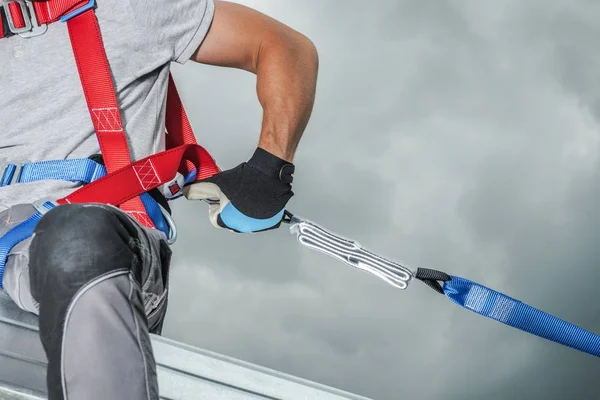We need to inspect safety harnesses to ensure they are in good working condition and capable of protecting the user in the event of a fall. A good inspection will also ensure the longevity of your equipment as well as meet legal requirements.
- User Safety: A damaged or worn harness may fail during a fall, leading to serious injury or death.
- Wear and Tear: Over time, exposure to sunlight, chemicals, or physical abrasion can weaken the materials.
- Compliance: Safety standards (BS 8437:2005) require regular inspections to remain compliant with legal and workplace safety regulations.
- Manufacturer Guidelines: Most manufacturers specify inspection intervals and conditions that must be met for continued use.
- Accountability: Regular inspections help identify misuse, improper storage, or damage that might otherwise go unnoticed.
Would you like a checklist or visual guide on how to inspect a harness properly?
What are the different types of safety harness?
There are several types of safety harnesses, each designed for specific tasks and environments. Here are the main types:
- Full Body Harness
- Most common type for fall arrest.
- Distributes fall forces across the shoulders, thighs, and pelvis.
- Used in construction, tower climbing, and general work-at-height tasks.
- Chest Harness
- Worn only around the chest and shoulders.
- Not for fall arrest—used for positioning or in confined spaces where a vertical lift is involved.
- Sometimes used in combination with a sit harness.
- Sit Harness (Work Positioning Harness)
- Supports the body in a sitting position.
- Common in rope access, rescue, and tower work where workers are suspended for long periods.
- Often used with a chest harness for full fall protection.
- Climbing Harness
- Similar to sit harnesses but designed for sport or recreational climbing.
- Lightweight with minimal padding; not HSE-rated for industrial use.
- Belts (Body Belts)
- Wrap around the waist.
- No longer allowed for fall arrest due to risk of injury; used for positioning only (like in utility work).
- Must be used with a fall arrest system that includes a full-body harness.
- Specialty Harnesses
- Fire-resistant harnesses for welding or hot work.
- Arc flash-rated harnesses for electrical work.
- High-visibility harnesses for night or low-light environments.
What we do at SAMS
We can assist in the inspection of your harness, we can either come to you or you can drop them off at our offices in Manston.
For more information visit Harness Inspections in Kent & London: SAMS Ltd

